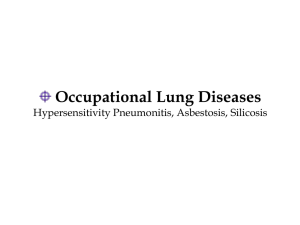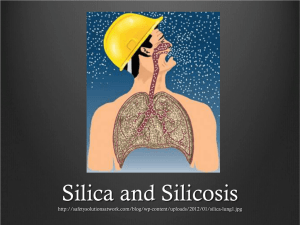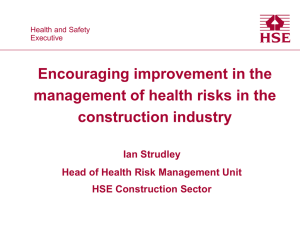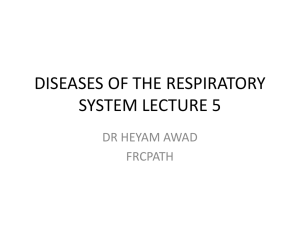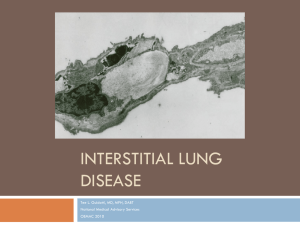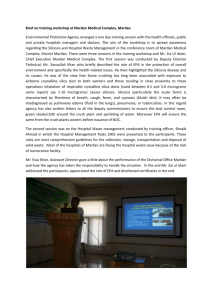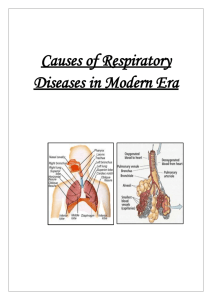Ill Health at Work - Safe Systems Consultancy
advertisement
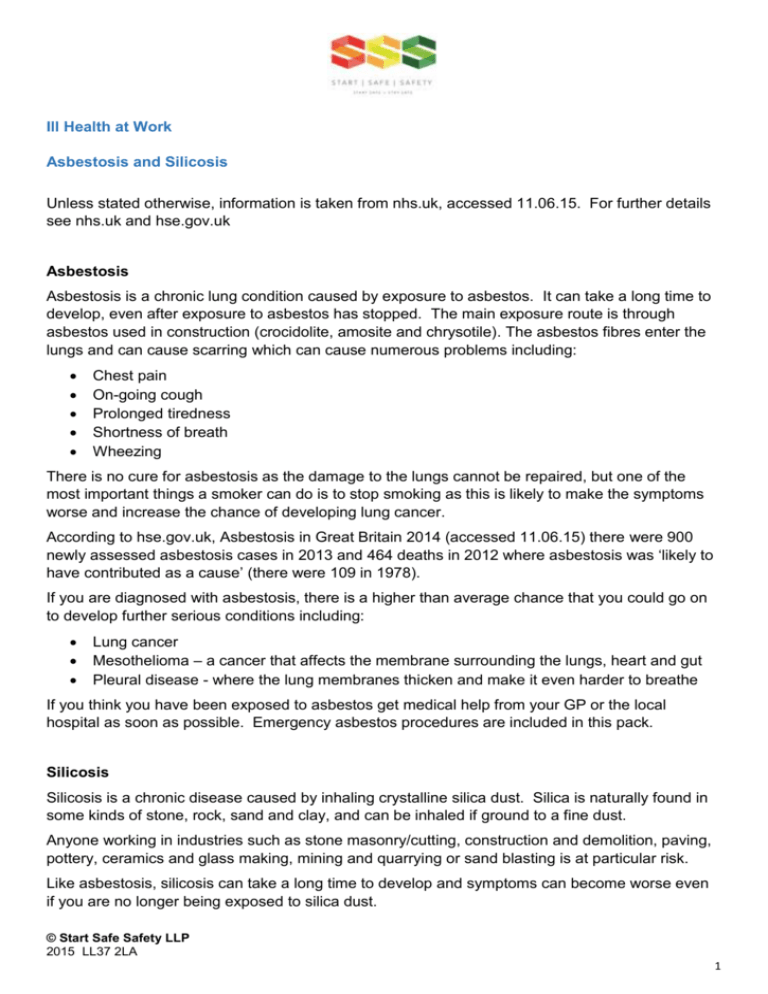
Ill Health at Work Asbestosis and Silicosis Unless stated otherwise, information is taken from nhs.uk, accessed 11.06.15. For further details see nhs.uk and hse.gov.uk Asbestosis Asbestosis is a chronic lung condition caused by exposure to asbestos. It can take a long time to develop, even after exposure to asbestos has stopped. The main exposure route is through asbestos used in construction (crocidolite, amosite and chrysotile). The asbestos fibres enter the lungs and can cause scarring which can cause numerous problems including: Chest pain On-going cough Prolonged tiredness Shortness of breath Wheezing There is no cure for asbestosis as the damage to the lungs cannot be repaired, but one of the most important things a smoker can do is to stop smoking as this is likely to make the symptoms worse and increase the chance of developing lung cancer. According to hse.gov.uk, Asbestosis in Great Britain 2014 (accessed 11.06.15) there were 900 newly assessed asbestosis cases in 2013 and 464 deaths in 2012 where asbestosis was ‘likely to have contributed as a cause’ (there were 109 in 1978). If you are diagnosed with asbestosis, there is a higher than average chance that you could go on to develop further serious conditions including: Lung cancer Mesothelioma – a cancer that affects the membrane surrounding the lungs, heart and gut Pleural disease - where the lung membranes thicken and make it even harder to breathe If you think you have been exposed to asbestos get medical help from your GP or the local hospital as soon as possible. Emergency asbestos procedures are included in this pack. Silicosis Silicosis is a chronic disease caused by inhaling crystalline silica dust. Silica is naturally found in some kinds of stone, rock, sand and clay, and can be inhaled if ground to a fine dust. Anyone working in industries such as stone masonry/cutting, construction and demolition, paving, pottery, ceramics and glass making, mining and quarrying or sand blasting is at particular risk. Like asbestosis, silicosis can take a long time to develop and symptoms can become worse even if you are no longer being exposed to silica dust. © Start Safe Safety LLP 2015 LL37 2LA 1 Symptoms of silicosis include: On-going cough Persistent shortness of breath Weakness and tiredness If you are diagnosed with silicosis, you are at increased risk of developing other serious conditions, including: Arthritis Chest infections Chronic obstructive pulmonary disease (COPD) Heart failure Kidney disease Lung cancer Pulmonary hypertension Tuberculosis (TB) There is no cure for silicosis as the damage to the lungs cannot be reversed. One of the most important things a smoker can do is to stop smoking as this is likely to make the symptoms worse. According to hse.gov.uk, Work-related respiratory diseases in Great Britain 2014 (accessed 11.06.15) there were 11 deaths due to silicosis in 2012. If you think you possibly may have silicosis, see your GP as soon as possible. With both diseases, avoiding exposure is important. Your employer should warn you of any risks to your health, provide you with adequate risk assessments and CoSHH assessments and ensure you have the correct PPE to keep you safe. © Start Safe Safety LLP 2015 LL37 2LA 2
